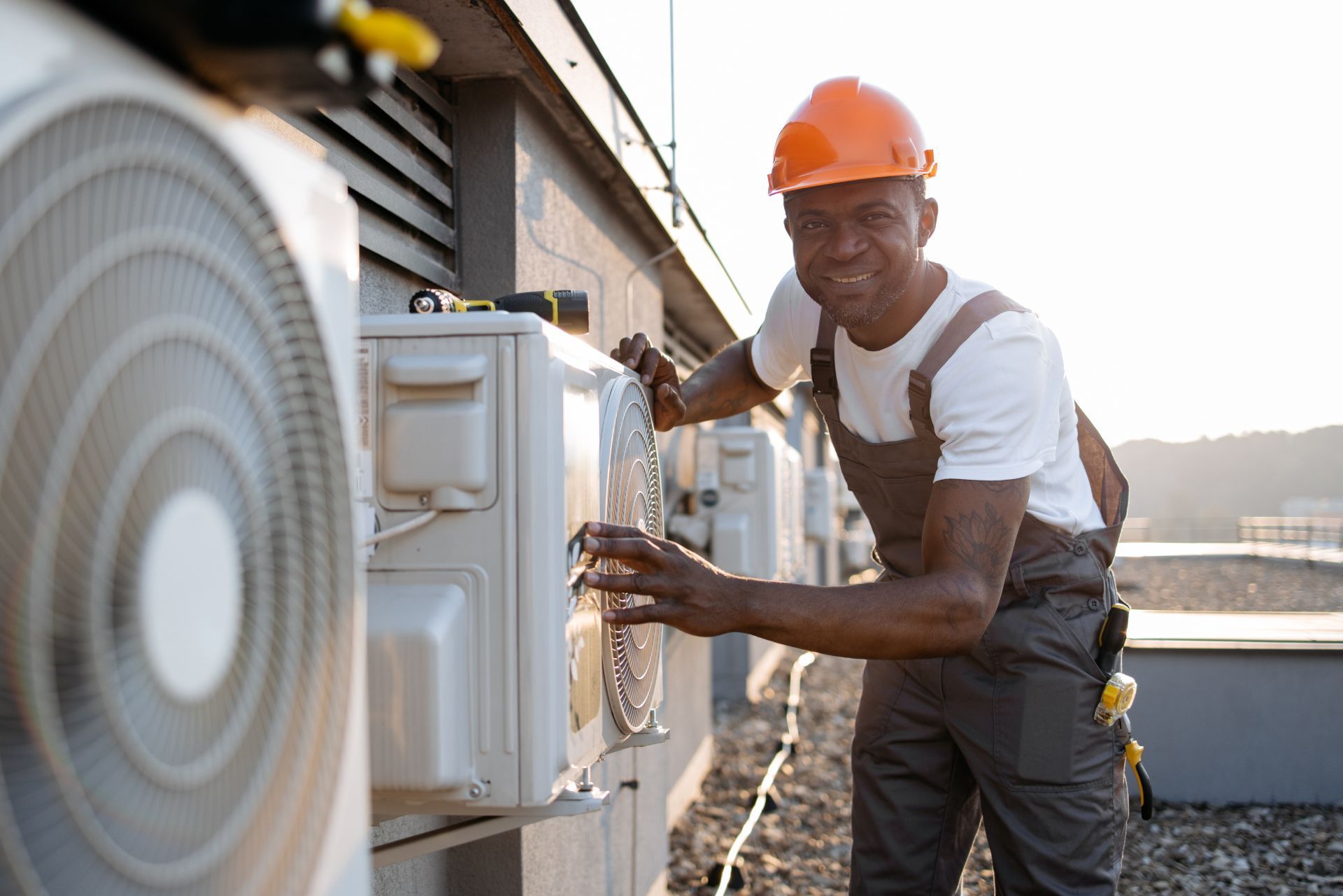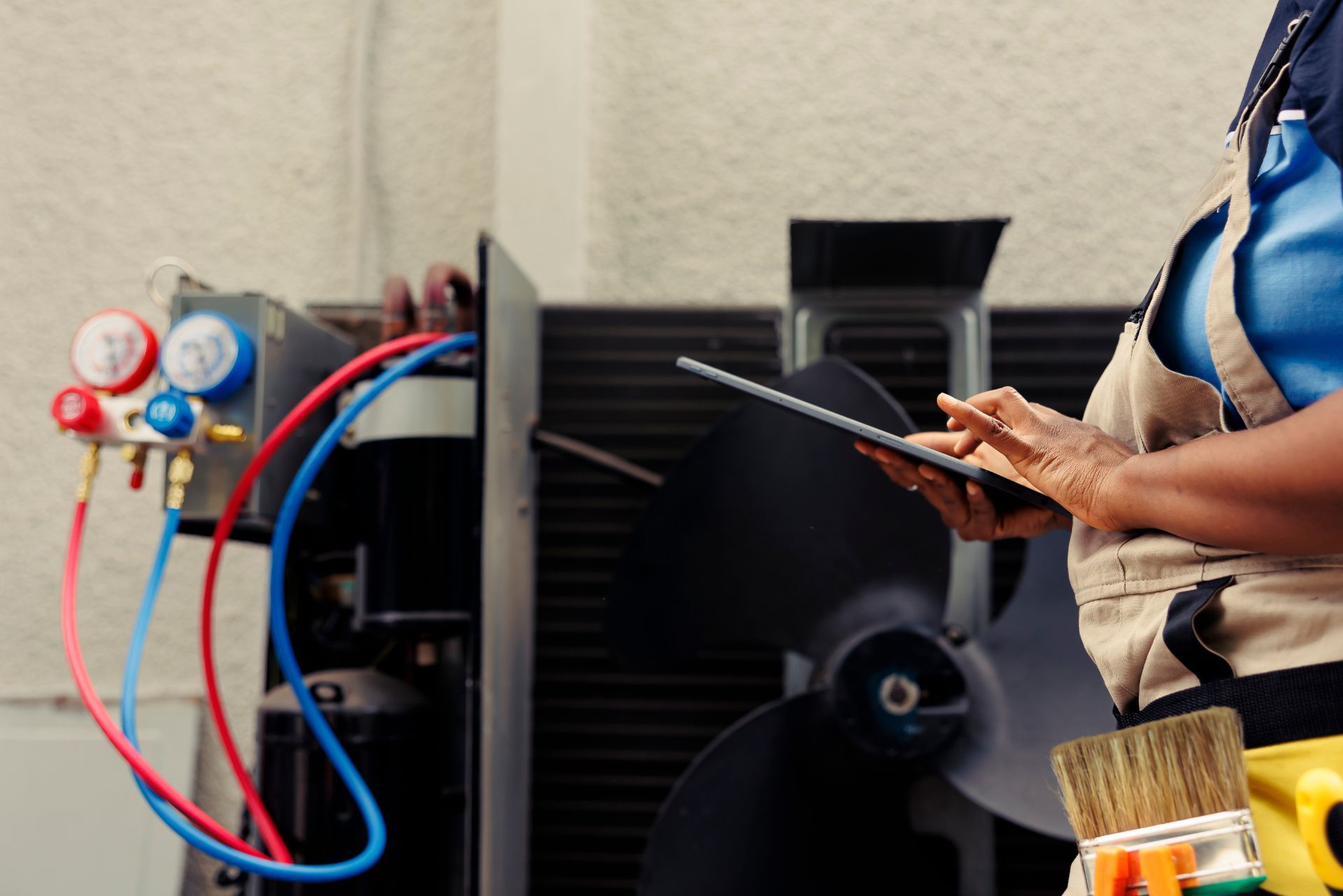Top 3 Recommended Policies

For HVAC contractors, the reliability of equipment is crucial—not just for delivering quality service but also for maintaining business continuity. Unexpected breakdowns of heating, ventilation, and air conditioning machinery can lead to costly repairs and significant downtime. This is where equipment breakdown insurance becomes an essential safeguard. As the global market for this type of insurance is projected to grow significantly, understanding its benefits and nuances is vital for HVAC professionals aiming to protect their investments and operations.
What Is Equipment Breakdown Insurance and Why Does It Matter for HVAC Contractors?
Equipment breakdown insurance, sometimes called boiler and machinery insurance, covers the repair or replacement costs when essential business equipment fails due to mechanical issues, electrical failure, or other internal malfunctions. For HVAC contractors, this means protection against the high costs associated with repairing or replacing heating and cooling units, refrigeration systems, and other specialized machinery.
HVAC equipment is often exposed to heavy use and environmental stress, which increases the risk of breakdowns. According to Business Insurance USA, the average repair cost for HVAC equipment can reach around $5,000, with major replacements potentially exceeding $25,000. Without proper insurance, these expenses can impose a severe financial burden on contractors.
Moreover, equipment breakdown insurance can cover not only the physical repair costs but also the resulting business interruption losses, helping contractors maintain cash flow during downtime. This comprehensive protection makes it a critical part of risk management for HVAC businesses of all sizes.
In addition to covering repair and replacement costs, equipment breakdown insurance can also extend to include coverage for spoilage of perishable goods, which is particularly relevant for HVAC contractors who work with refrigeration systems. If a refrigeration unit fails and leads to the spoilage of food or pharmaceuticals, the financial losses can be substantial. This aspect of coverage can safeguard contractors from unexpected losses that could arise from equipment failure, ensuring that their clients' needs are met without incurring additional costs.
Furthermore, having equipment breakdown insurance can enhance a contractor's reputation and reliability in the eyes of clients. When customers know that a contractor is protected against equipment failures, they may feel more confident in hiring them for their HVAC needs. This insurance not only serves as a safety net for the contractor but can also be a selling point, demonstrating professionalism and a commitment to quality service. In an industry where trust and dependability are paramount, this added layer of security can make a significant difference in attracting and retaining clients.

Key Factors Driving Demand for Equipment Breakdown Insurance in the HVAC Industry
Several industry trends have contributed to the growing importance of equipment breakdown insurance for HVAC contractors. One significant factor is the aging infrastructure of existing equipment. Over time, components such as electrical insulation degrade, leading to increased chances of failure and electrical disturbances. As noted by Travelers Insurance, aging electrical equipment is becoming less reliable, which heightens the risk of costly breakdowns.
Additionally, the rise in automation and specialized machinery within the HVAC sector has led to higher investments in equipment. A recent study highlighted by Wise Guy Reports found that demand for automation solutions has increased by approximately 15% over the last three years. This trend means contractors are relying more on complex and expensive machinery that requires protection against unexpected failures.
Supply chain volatility and rising labor costs also add pressure on HVAC businesses, making it even more critical to mitigate risks through insurance. As equipment repair and replacement become more expensive and time-consuming, having insurance coverage can make the difference between a manageable setback and a business crisis.
Moreover, the increasing regulatory requirements surrounding energy efficiency and environmental standards have placed additional burdens on HVAC contractors. Compliance with these regulations often necessitates the use of advanced technology and equipment, which can be costly to repair or replace. As contractors invest in more sophisticated systems to meet these standards, the potential financial impact of equipment breakdowns becomes even more significant, underscoring the need for comprehensive insurance coverage.
Furthermore, the growing trend of remote monitoring and smart HVAC systems has introduced new complexities in equipment maintenance. While these technologies can enhance efficiency and performance, they also require specialized knowledge to troubleshoot and repair. This reliance on cutting-edge technology can lead to increased downtime if issues arise, making it essential for contractors to have robust equipment breakdown insurance to safeguard their investments and ensure continuous operation in a competitive market.
Understanding the Coverage: What HVAC Contractors Should Look For
When selecting equipment breakdown insurance, HVAC contractors should carefully evaluate the scope of coverage to ensure it aligns with their specific operational risks. Typical policies cover mechanical and electrical breakdowns, pressure vessel failures, and electronic equipment malfunctions. However, coverage details can vary widely, so understanding the fine print is essential.
Business interruption coverage is another important component. It compensates for lost income and extra expenses incurred while equipment is being repaired or replaced. Given the average annual cost of HVAC business insurance ranges from $1,500 to $3,000 depending on the business size and coverage level, as reported by CGAA, contractors should balance cost with comprehensive protection.
Contractors should also consider coverage for ancillary equipment and tools, which are often overlooked but critical for daily operations. Additionally, policies that include risk assessment services can help identify potential vulnerabilities, reducing the likelihood of breakdowns before they occur.
Moreover, it is crucial for HVAC contractors to be aware of the exclusions that may apply to their policies. For instance, certain policies might not cover damages resulting from improper maintenance or neglect, which can lead to significant financial losses. Understanding these exclusions can help contractors take proactive measures to mitigate risks, such as implementing regular maintenance schedules and training staff on proper equipment handling. Furthermore, some insurers may offer incentives for contractors who demonstrate a commitment to safety and maintenance, potentially lowering premiums while enhancing coverage.
Additionally, contractors should explore the option of bundling their equipment breakdown insurance with other types of coverage, such as
general liability or
workers' compensation. Bundling can often lead to cost savings and simplify the management of insurance policies. It's also beneficial for contractors to engage with an insurance broker who specializes in the HVAC industry, as they can provide tailored advice and help navigate the complexities of different policies, ensuring that contractors secure the most comprehensive coverage for their unique needs.
Market Trends and Recent Developments Impacting HVAC Equipment Insurance
The equipment breakdown insurance market is evolving rapidly, influenced by technological advancements and industry consolidation. According to Intel Market Research, the global market is expected to grow at a compound annual growth rate (CAGR) of 8.9%, reaching a valuation of $12.6 billion by 2031. This growth is largely driven by increased adoption of industrial automation and the rising complexity of equipment used by contractors.
In August 2023, a major merger in the insurance sector consolidated resources to enhance risk assessment and policy offerings, reshaping the competitive landscape for equipment breakdown coverage. This development, reported by Wise Guy Reports, is expected to bring more tailored and innovative insurance products to the HVAC industry, helping contractors better manage their risks.
Contractors should stay informed about these market dynamics to take advantage of improved coverage options and competitive pricing. Additionally, the integration of advanced data analytics and artificial intelligence in underwriting processes is becoming increasingly prevalent. Insurers are leveraging these technologies to assess risk more accurately, leading to more personalized policies that reflect the specific needs and operational realities of HVAC contractors. This shift not only enhances the precision of risk evaluation but also enables insurers to offer proactive risk management strategies, which can significantly reduce the likelihood of equipment failures.
Moreover, the growing emphasis on sustainability and energy efficiency within the HVAC industry is influencing insurance offerings as well. As contractors increasingly adopt eco-friendly technologies and practices, insurers are beginning to recognize the value of covering green equipment and systems. This trend is not only beneficial for the environment but also opens up new avenues for contractors to secure favorable insurance terms, as they align their operations with the evolving standards of sustainability. By embracing these changes, HVAC contractors can position themselves advantageously in a competitive market while also contributing to broader environmental goals.

Practical Tips for HVAC Contractors to Manage Equipment Risks
Beyond securing insurance, HVAC contractors can adopt several proactive measures to minimize equipment breakdown risks. Regular maintenance and timely inspections are fundamental to extending equipment lifespan and preventing unexpected failures. Implementing a preventive maintenance schedule can identify wear and tear early, reducing costly repairs. This proactive approach not only saves money but also enhances customer satisfaction, as clients are less likely to experience service interruptions due to equipment malfunctions.
Investing in training for technicians on the latest equipment and technologies also enhances operational reliability. As automation becomes more prevalent, staying updated on new machinery and its maintenance requirements is crucial. Moreover, fostering a culture of continuous learning within the team can lead to improved problem-solving skills and greater efficiency on the job. Technicians who are well-versed in the latest HVAC innovations can also provide clients with better insights into energy-efficient solutions, ultimately helping them save on utility costs while promoting environmentally friendly practices.
Finally, partnering with an insurance provider that understands the unique challenges of the HVAC industry can provide valuable guidance on risk mitigation and claims management. This partnership ensures that contractors are not only protected financially but also supported in maintaining resilient operations. Additionally, engaging with industry associations can offer HVAC contractors access to resources, networking opportunities, and best practices that further enhance their risk management strategies. By staying connected with peers and experts, contractors can share insights and learn from each other's experiences, creating a more robust framework for navigating the complexities of equipment management. your investments and maintaining compliance with industry standards
Conclusion: Why Equipment Breakdown Insurance Is Essential for HVAC Contractors
In the fast-paced and equipment-dependent HVAC industry, unexpected breakdowns can disrupt business operations and lead to significant financial losses. Equipment breakdown insurance offers a vital safety net, covering costly repairs, replacements, and business interruptions.
With the global market for this insurance expanding rapidly and industry challenges such as aging equipment and rising costs intensifying, HVAC contractors cannot afford to overlook this coverage. By understanding the key features of equipment breakdown insurance, staying abreast of market trends, and adopting proactive risk management strategies, contractors can safeguard their businesses and ensure long-term success.
For more detailed insights into equipment breakdown insurance and its growing importance, contractors can explore resources like
Travelers Insurance and Intel Market Research.
Contact Us
